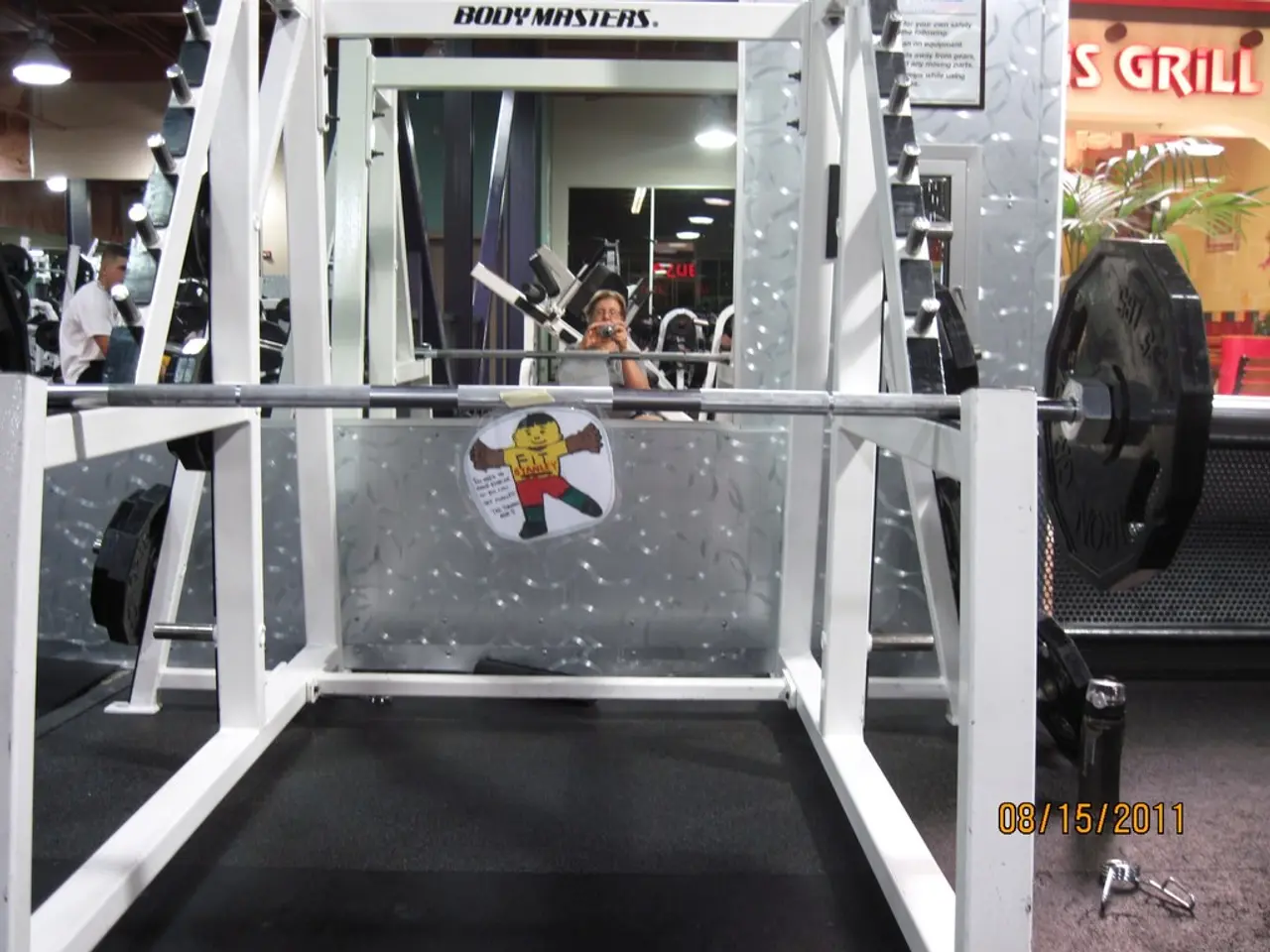Common Blunders in Pilates Classes and Strategies for Swift Improvement
In the world of bodyweight training, Pilates stands out for its focus on small, precise movements designed to improve muscle tone and correct form. Kerrie-Ann Bradley, a Pilates instructor and founder of Pilates At Your Desk, shares top form tips for improving an at-home Pilates practice, with a focus on squats, engaging the core, and alignment in bridge pose.
Squats
To perform a Pilates squat correctly, stand with feet parallel, hips aligned over knees and ankles (like railroad tracks). Keep shoulders stacked over hips. Initiate the squat by pushing your tailbone slightly toward your heels while bending knees—do not let knees go past toes. Maintain abdominal engagement throughout to support the spine and avoid arching the lower back. Squeeze the thighs on the way up to engage the glutes.
Engaging the Core
One common misconception is that squeezing the stomach engages the core. However, to correctly engage the core in Pilates, always scoop the low belly toward the spine to maintain a “c-curve” shape of the spine, which stabilizes the torso. Actively press feet into the floor or wall for stability. In exercises like the roll-up, coordinate breath with movement—exhale to scoop the belly and engage the core during exertion.
Alignment in Bridge Pose
In a bridge pose, lie on the back with knees bent and feet flat, hip-width apart. Engage abdominal muscles before lifting hips, preventing low back strain. Press feet firmly into the floor, squeezing glutes to lift the hips. Keep knees aligned over ankles, avoiding them splaying out or collapsing inward. Keep shoulders relaxed and down on the floor. Avoid overarching the lower back by keeping the spine long and neutral through the lift.
In certain exercises, it's common for people to overuse the glutes, particularly during squats. To improve form, focus on pushing down through the heels to lift the hips from under the bottom. If one hip is higher than the other in a bridge pose, pressing down the ball of the big toe in the lower hip can bring them up to level. The highest point in a bridge pose should be the hips, not the chest.
Additional advice includes practicing Pilates exercises that target posture, such as the shoulder bridge and spine stretches, which reinforce proper spinal alignment and muscular balance crucial for improving form in squats and bridges. Warming up with core-engaging stretches and mobility work like cat-cow can also prepare the spine and hips for a Pilates workout.
Incorporating tactile feedback methods, such as performing side-lying moves against a wall, can help maintain correct hip and spinal alignment by giving easy-to-detect cues during exercises.
By focusing on alignment, core engagement, breath control, and mindful movement, you can effectively improve your Pilates form at home. It's important to remember that while it's important to work on the glutes, overusing them can lead to incorrect form in certain exercises. With practice and dedication, you'll soon see improvements in your at-home Pilates practice.
For those new to Pilates or seeking to alleviate back pain, there are Pilates workouts specifically designed for beginners and for addressing back pain. These resources can provide a solid foundation for your at-home Pilates practice.
Yoga, as a form of health-and-wellness practice, can complement your Pilates routine by helping you achieve better posture, spinal alignment, and muscle balance, which are crucial for improving form in exercises like squats and bridges. An effective way to enhance your Pilates practice is to incorporate yoga poses that target the core, such as plank and boat pose, into your daily routine.
The science of fitness-and-exercise reveals that consistency and proper technique are essential for achieving desired results. By paying attention to minute details like alignment, core engagement, and breath control, you can transform your at-home Pilates practice from a repetitive routine into an effective tool for enhancing your physical fitness and overall wellness.
A regular Pilates routine can positively impact not only your fitness level but also your mental health. By focusing on mindful movement and controlled breathing, Pilates encourages mental clarity and stress reduction, making it a holistic approach to wellness.





